The Incognito mode in Chrome may come in handy when you want to surf the web privately. It adds privacy measures to web browsing by disabling trackers, cookies, and cache. However, nothing is private on the internet. Chrome’s Incognito feature claims to wipe your online footprints in a limited way, but it still knows about all your activities. If you do not find this feature useful, follow this tutorial to disable the Incognito mode in Chrome for Windows and Mac.
Disabling Chrome’s Incognito Mode on Windows
If you are a Windows user, you can disable the New Incognito window option in the Chrome browser menu using a command and via Registry Editor tweaks.
Method 1: Using Command Prompt
- Launch the Start Menu and type cmd to open the Command Prompt window. Make sure you have administrative rights over it. For that, right-click on it and select Run as Administrator.
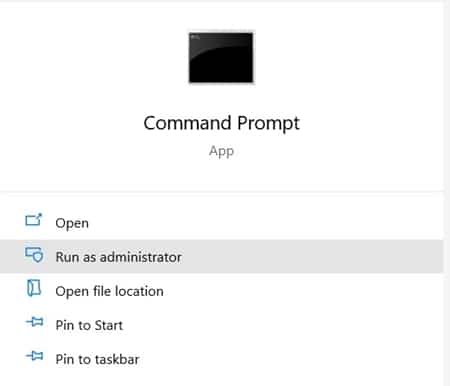
- Next, execute the below command and hit Enter:
REG ADD HKLM\SOFTWARE\Policies\Google\Chrome /v IncognitoModeAvailability /t REG_DWORD /d 1
- The message ‘The operation completed successfully signifies that you have disabled the Incognito Mode in Chrome.
- Relaunch Chrome and click the overflow icon.
- The Incognito Mode option will now be disabled. If it’s still there, head to the Task Manager and kill all running processes related to Chrome. Reopen Chrome and check, Incognito Mode will have been disabled now.
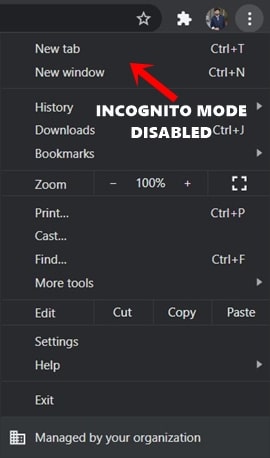
Re-Enable It
You could also re-enable it anytime you wish. For that, paste the below command in the command prompt (with administrative privileges):
REG DELETE HKLM\SOFTWARE\Policies\Google\Chrome /v IncognitoModeAvailability /f
So this was all from this section of the guide to disable Chrome’s Incognito Mode via Command Prompt. Let’s have a look at the steps to do so via the Registry.
Using Registry Editor
- Click the Windows icon and hit Windows + R to open the Run dialog box. Type Regedit and hit Enter.

- Type in the location below in the Registry Editor address bar and then select the Chrome option from the left-hand pane.
HKEY_LOCAL_MACHINE\SOFTWARE\Policies\Google\Chrome
- Now, right-click the IncognitoModeAvailability file and select Modify. However, if there isn’t any such file, you could manually create the same. To do so, right-click in the right-hand pane and select New > DWORD (32-bit) Value. Name this file as IncognitoModeAvailability.
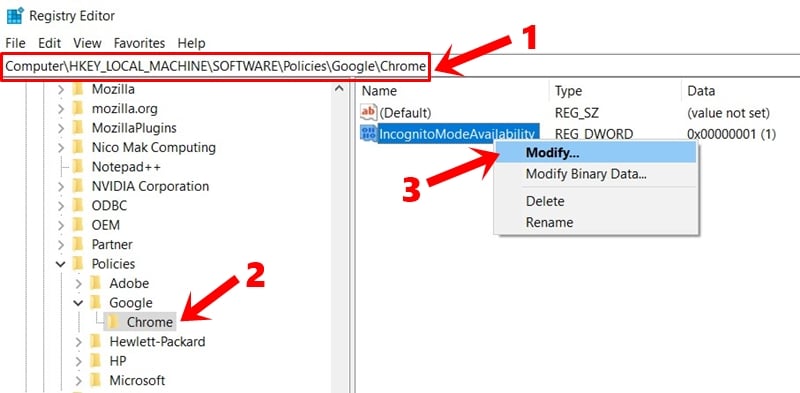
- Edit DWORD (32-bit) Value dialog box will now open. Enter 1 under the Value Data field and hit OK.
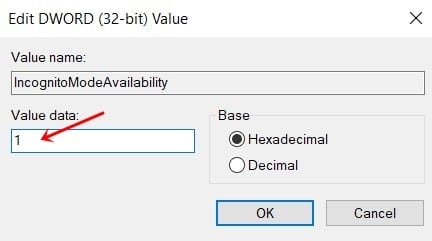
- Go ahead and restart the Chrome browser (make sure to kill all Chrome background processes from Task Manager). Incognito Mode will no longer be there.
Don’t Miss: How to Throttle Network Speed in Google Chrome
Bring Back Incognito Mode
To re-enable it, change the Value Data field’s entry from 1 to 0 in the IncognitoModeAvailability file. That’s it!
Disable Chrome’s Incognito Mode on macOS
If you are a Mac user, you can follow the steps below to disable the Incognito Mode in Chrome browser using the following terminal command.
- Make sure you have already closed the Chrome Browser.
- Navigate to Finder > Go > Utilities.
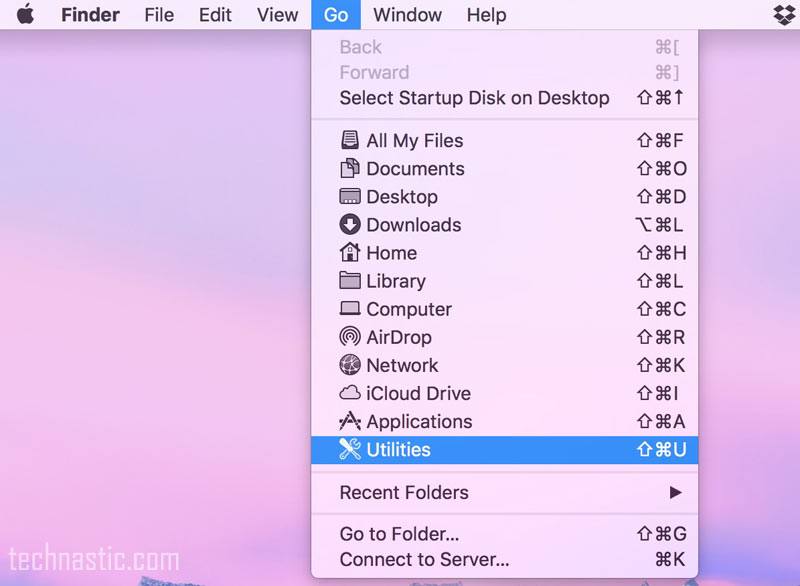
- Open the Terminal app.
- Now type the following command to disable the Incognito Mode and press Enter.
defaults write com.google.chrome IncognitoModeAvailability -integer 1
- Restart your Mac.
- When your computer boots up, the Incognito Mode option in the Chrome Browser will be unavailable.
Enable Incognito Mode
To bring back Chrome’s Incognito Mode on your Mac, you can execute the following command via the Terminal and restart your computer.
defaults write com.google.chrome IncognitoModeAvailability -integer 0
Do let us know which method you end up using. Likewise, we would also love to hear your views on this tutorial. Do drop in your opinions in the comments section below.

